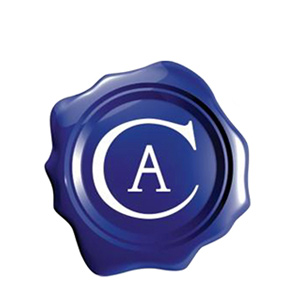09 juin YP FORUM – Poetry of the nose

French Perfume experts Jean-Marie Martin-Hattemberg (left) and Anne Camilli.
Photo: Edmond So
Perfume is as old as civilisation; but it didn’t gain mass appeal until the 20th century. Now the product – and its packaging – is highly sought after
By Phila Siu
Perfumery is much more than just mixing clever concoctions of wonderful fragrances. It is an art and culture, according to two visiting experts from the land that is today most associated with the luxury product, France.
Anne Camilli and Jean-Marie Martin-Hattemberg are authors of several perfume books and have held exhibitions in many countries.
They are in Hong Kong with their exhibition of about 120 perfume-related objects, called Perfume Tales and Legends, at Pacific Place until June 16, as part of the Le French May Arts Festival.
Camilli said that perfume has changed a lot over the centuries, but especially so during the 20th century, when it moved from a trade of artisans to the multi-million-dollar mass production businesses of today.
In fact, perfume was not very popular until the 20th century, Martin-Hattemberg said. Before the first world war, it had been used mainly as a disinfectant. But the war changed society forever, especially the status of women, who had to take over many of the jobs previously carried out by the men who had been sent to fight as soldiers. Many did not return.
So it was women who bolstered the shattered economies in the post-war years. In the West in particular, this gave them confidence to try things they’d never been allowed to do before: driving cars, wearing shorts – and wearing perfume.
Perfume has a much older history; some of the most famous brands today were actually founded more than a century ago.
One of Martin-Hattemberg’s favourites is Guerlain, which was founded in 1828 and is still popular.
« Perfume is an artistic creation just like poetry, » he says.
One notable feature of perfume is that the packaging is often as intriguing as the scent. Martin-Hattemberg must have a large house in France to keep his collection of 4,500 perfume-related objects. One item from his collection on show at the exhibition is a perfume oil phial from Egypt dating from about 2,500 BC.
But his favourite object on display is a bottle of Le Roy Soleil, produced by Elsa Schiaparelli in 1945. The bottle, designed by the surrealist Spanish artist Salvador Dali, features a seascape with waves created from blue enamel. The stopper is a sun rising above the ocean.
Martin-Hattemberg said that a rare or extraordinary perfume bottle alone can cost as much as Euro 7,000 (HK$80,000).
« But I collect the bottles because I like them, not because of the price, » he says.
Camilli also finds the design of the perfume bottle very important – because perfume is basically invisible, the bottle is its only physical representation.
« The bottles tell the stories, » she says. « You dream about the beautiful bottles you see. The bottles with simple designs just cannot arouse your emotions. »
When it comes to choosing perfume, Martin-Hattemberg suggests people try a variety to find their favourite fragrance. Camilli said it is a very personal matter – the important thing is you keep trying until you find one you like.
But both insist on one golden rule: don’t use strongly-perfumed scents in the summer. They don’t mix well with the smell of sweat.
